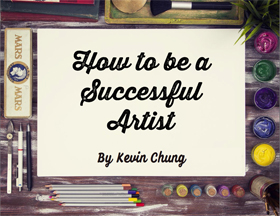“It is not in the stars to hold our destiny but in ourselves.” ― William Shakespeare
Buy this print from Storenvy.
One thing that has always bothered me is when people blame their lack of success on others. They believe because their fates have already been determined. They believe they should just give up because things haven’t gone their way.
As any successful person will tell you, your fate isn’t tied to the whim of others. Stop worrying about things you can’t control. Instead, worry about the things you can control.
Things you can’t control:
What people think about you. You can’t control how people feel about you. People will form their own opinions regardless of what you do. So there’s no point in worrying about it. You are better off focusing on things you can control like finding the right audience.
What people think about your work. The same goes for people’s opinion about your work. People will either like it or they won’t. It’s almost impossible to change people’s minds, so stop trying. The best thing you can do is appreciate the people who do like your work.
Being rich already. Some people complain that other artists have an unfair advantage of already being rich. So what? Everyone’s situation is different. You can’t control whether you have rich relatives or whether you made money from a previous life. So stop worrying about how you are unprivileged. Instead, focus on what you can do to change your own financial situation.
Things you can control:
Building good habits. One of the biggest indicators of success is the habits you’ve built over time. You can only achieve so much when you are always running around like a chicken with its head cut off. You can’t do things on a whim. It’s hard to be consistent if you haven’t built the right habits around being consistent. You have to build a consistent routine and self-discipline.
Being persistent. Those who give up will never achieve anything. It’s just a fact of life. We will never achieve our dreams if we quit at the first sign of trouble. You have to be willing to fail and pick yourself back up again. Persistent people are the ones still standing while everything around them is crumbling to the ground. You can’t control much about the world, but you can control whether you let the world bring you down.
Learning and self-improvement. While most people stop learning after they finish school, those who continue to learn achieve the most. There are a surprising number of people who are content with what they know. They refuse to become more knowledgeable even about things that interest them. Just by the virtue of reading this, you are different. If you want to continue to grow and improve as an artist and a person, you have to continue learning.
Conclusion:
If you’ve read this far, you have realized that our paths in life are not predetermined. We are not bound by our destinies. We create our own destinies. Don’t let anyone tell you anything different.
Sure, there are things in life we can’t control, but that doesn’t mean we need to let those things affect who we are and what we become. You can’t control the people or the things around you, but you can control how you react to them. So stop looking towards the stars for directions, look within yourself.
Buy William Shakespeare Quote Art
Photos by NASA | Unsplash















Follow Me!